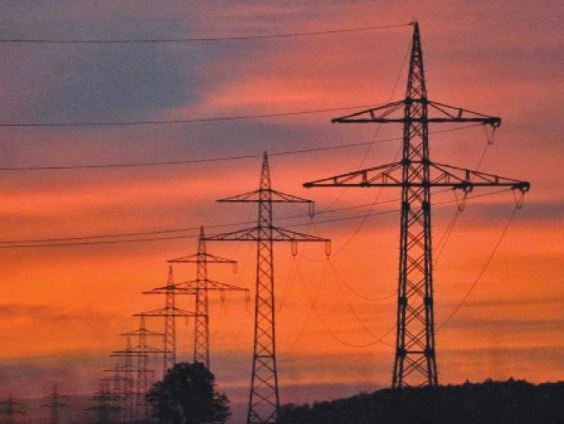GP Short Notes # 866, 13 April 2024
 Rohini Reenum
Rohini Reenum On 8 April, an editorial in Dawn titled “The Rs400bn quandary” highlighted the issue of ‘financial instability’ plaguing the distribution companies (Discos) in Pakistan. The editorial argues that this financial instability has ‘led to a conundrum for decision-makers, whereby the federal government, under the IMF programme, seeks to alleviate the burden of circular debt and consider shedding the Discos.’ According to another article in The Nation, the total loss to public exchequer on account of the Discos has been pegged at PKR 403 billion for the fiscal year 2022-23. This has added to the already mounting circular debt. Quoting the Industry Report 2022-23 of the National Electric Power Regulatory Authority (Nepra), the Express Tribune attributed the loss to an inability of the Discos to curb losses and ‘a decline in the recovery of electricity bills.’
Five Issues: Losses, Recovery Failure and Problems of Governance
First, the Discos have not been able to keep losses within the target set by Nepra. The overall actual losses in the financial year 2022-23 were 16.38 per cent while the Nepra-mandated actual Transmission and Distribution (T&D) losses for the financial year 2022-23 were set at 12.21 per cent. This led to the Discos reporting ‘a staggering net negative equity of PKR 1,426 billion.’ Barring some discos like FESCO, GEPCO and K-Electric, which have been successful in keeping their losses at par with the target or below it, the majority have been unsuccessful in adhering to the set limit, causing losses around PKR 166 billion to the national exchequer.
Second, compared to the previous fiscal year, recovery rate has declined by almost 4 per cent. The recovery rate in the fiscal year 2022-23 was 86.26 per cent as compared to 90.51 per cent during 2021-22. According to the Nepra report, only IESCO was able to achieve the target of 100 per cent recovery. GEPCO, FESCO, and MEPCO were able to achieve 98 to 99 per cent recovery. QESCO was the worst performing with 36.9 per cent recovery. The low recovery ratios have depleted revenues ‘beyond acceptable levels’ and led to a loss of PKR 263 billion to the national exchequer.
Third, the nature of tariff regime. A uniform tariff regime which equalizes prices at the national level through federal subsidies has stymied competitiveness by punishing the top performers and rewarding the inefficient. The rationale is to not pass on the actual cost of the service to the consumer. The decision, however, has been criticized as politically motivated. An article in Dawn quoted the World Bank which has noted that ‘Pakistan has the highest subsidies on energy products in South Asia—about 0.9per cent of GDP (PKR 976billion), two-thirds of which were for electricity consumption.’ The World Bank has also noted that despite increase in tariffs in recent years, ‘the notified tariff remains below the cost recovery level.’
Fourth, the problem of circular debt. An article in Dawn cited a World Bank update on circular debt which revealed that ‘the power sector circular debt growing by a monthly average of PKR 66.14billion would cross PKR 2.635trillion (2.4per cent of GDP) by 31 January compared to PKR 2.172 trillion recorded at end of June 2023.’ The circular debt is compounded by ‘the absence of cost-reflective tariffs, together with operational and technical inefficiencies within the state-owned electricity distribution companies (Discos)’ as this hampers revenue collection in a manner that does not cover the cost of electricity supply.
Fifth, the lack of consensus among stakeholders. An editorial in Dawn has pointed out the lack of agreement on required reforms and ‘the future of Discos’ among relevant stakeholders like the Power Division, the Special Investment Facilitation Council, the Privatization Commission, and the provinces.
The Tough Road Ahead
There has been much debate on how to deal with the myriad problems plaguing the Discos- from complete privatization to provincialization. Some of the recommendations made by the Nepra report include the following measures: Privatization of DISCOs through Public-Private Partnerships (PPP); Horizontal Restructuring of DISCOs into Smaller Units; Discontinuation of AT&C-based Load-Shedding through Technology Adoption; Grant Autonomy to DISCOs for Improved Governance and Performance; Timely Subsidy Payments by the Federal Government to Ensure Financial Stability; Outsourcing of High Loss Feeders to the Private Sector; and Installation of Pre-paid Meters for Enhanced Revenue Collection and Theft Prevention.
The World Bank has recognized and appreciated the ‘timely tariff increases in the last two years, coupled with subsidy rationalization reforms’ and has urged the government to continue on the path of structural reforms.
Given the questions facing the Discos, there are no easy solutions. It appears the road ahead is tough for the Discos in Pakistan.
References
Basit Ghauri, “The Rs400bn quandary,”Dawn, 8 April 2024
Khaleeq Kiani, “Energy sector circular debt surges to Rs5.5tr,”Dawn, 4 April 2024
“Pakistan Development Update April 2024: Fiscal Impact of the Federal State Owned Enterprises,” The World Bank, 4 February 2024
Zafar Bhutta, “DISCOs contribute Rs396b to debt,” The Express Tribune, 3
February 2024
“State of Industry Report 2023,” Nepra, 2 February 2024
Fawad Yousafzai, “Discos, K-Electric inflicted Rs429 billion loss on national exchequer in FY2022-23,”The Nation, 27 February 2024